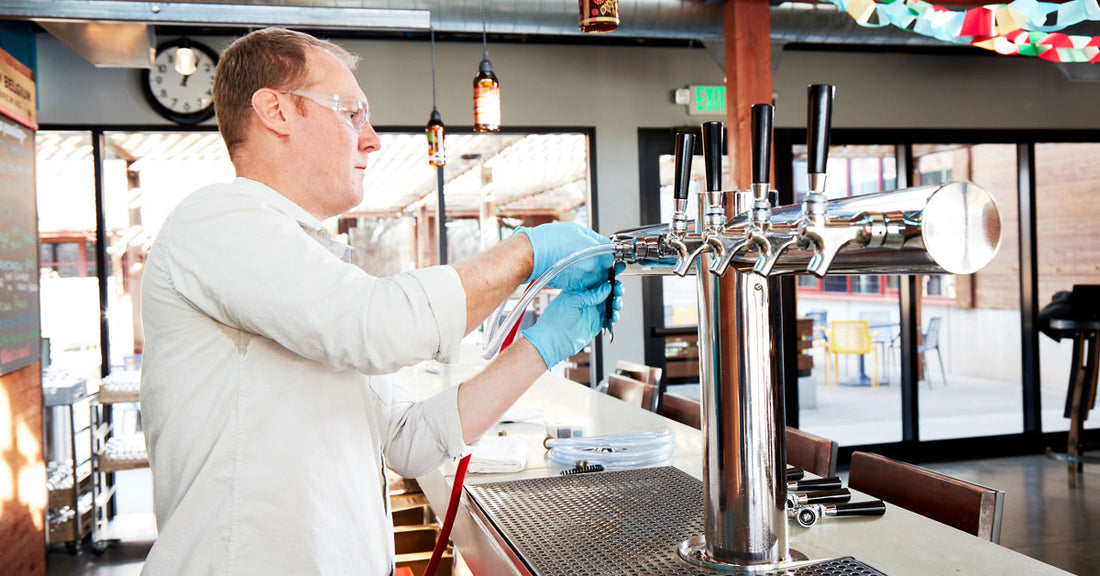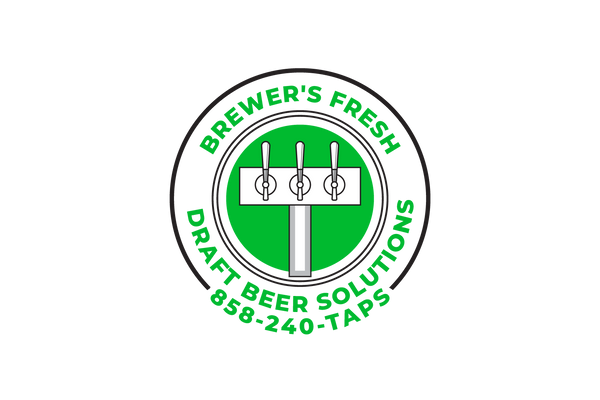
Draft System Basic Troubleshooting with Brewer's Fresh
Share
Draft System Basic Troubleshooting with Brewer's Fresh
Draft beer is one of the most popular and profitable beverages in the hospitality industry, but to guarantee quality and consistency, it also needs to be properly cared for and maintained. Problems that you may encounter may be affecting your draft beer's taste, appearance, and aroma. In this guide, we will guide you through some of the most common draft beer troubleshooting issues and how to fix them with the help of Brewers Fresh.
Temperature
One of the most frequently seen issues is attempting to dispense beer from a warmer keg than ideal or temperature fluctuations from keg to glass. Most draft beer should be served around 36-38° F. With the beer's carbonation, its CO2 (carbon dioxide) gas is quite sensitive to temperature changes causing it to foam. For optimal system performance, beer temperature must be consistent throughout the system.
Some of the symptoms and solutions for temperature issues are:
- Foamy or flat beer: This could be due to a recently delivered keg that has not been refrigerated long enough or a warm spot between the keg and faucet that causes carbonation to escape. To fix this, allow the keg to rest in refrigeration for a full day before dispensing, and ensure that your dispensing tower and lines are insulated and cooled with a fan or glycol system.
- Hazy or cloudy beer: This could be due to beer that has been frozen and then thawed, which affects its clarity and stability. To fix this, ensure your keg storage or coolant temperature is within the appropriate range of 34-38°F.
To avoid temperature issues, you should:
- Use a thermometer to check the temperature of your keg and your glass before dispensing.
- Store your kegs in a cool, dark place away from direct sunlight or heat sources.
- Keep your dispensing tower and lines insulated and cooled with a fan or glycol system.
Pressure
Another common issue is having the wrong pressure applied to your keg. Pressure is essential for keeping your beer carbonated and pushing it through the lines to your faucet. However, too much or too little pressure can cause problems such as foaming, flatness, or over-carbonation.
The pressure source for applying to the keg can be either CO2 or a gas blend of CO2 and nitrogen. CO2 is usual for short kegerator-type systems where a gas blend of CO2 and nitrogen allows dispensing over longer distances. The correct amount of these pressure sources is required to prevent undesirable flavor changes and excess foaming.
Some of the symptoms and solutions for pressure issues are:
- Foamy or flat beer: This could be due to too low or too high pressure applied to the keg, which causes carbonation to release or absorbed while pouring. To fix this, you should adjust the pressure according to the beer temperature, carbonation level, elevation, and system length.
- Over-carbonated or wild beer: This could be due to too high pressure applied to the keg for a long time, which causes the beer’s top layer to absorb excess CO2. To fix this, you should lower the pressure and wait until the over-carbonated layer reaches the bottom of the keg.
To avoid pressure issues, you should:
- Use a pressure gauge to check the pressure of your gas source and regulator before dispensing.
- Use the appropriate gas source and blend ratio for your beer style and system length.
- Adjust the pressure according to the beer temperature, carbonation level, elevation, and system length.
System Maintenance
The last but not least issue is having a dirty or poorly maintained draft system. Your draft system consists of various components, such as the faucet, the beer hose, the keg coupler, the gas line, the regulator, and the gas tank. All of these components need to be cleaned and sanitized regularly to prevent contamination, infection, or buildup that can affect the quality and safety of your beer.
Some of the symptoms and solutions for system maintenance issues are:
- Off-flavors or aromas: This could be due to contamination from mold, bacteria, or other substances that grow in your draft system components or glassware. To fix this, you should clean and sanitize your draft system components and glassware with the proper cleaning equipment and chemicals every two weeks or with every keg change.
- Foamy or flat beer: This could be due to a buildup of oils, residues, or minerals that clog or damage your draft system components or glassware. To fix this, you should clean and descale your draft system components and glassware with the proper cleaning equipment and chemicals every two weeks or with every keg change.
To avoid system maintenance issues, you should:
- Follow a regular cleaning schedule for your draft system components and use the proper cleaning equipment and SAFECID cleaning chemicals.
- Inspect your draft system components for wear and tear and replace them.
- Check your gas source for leaks or damage and fix them if needed.
- Use Brewers Fresh services to clean and sanitize your draft system.
Draft beer troubleshooting can be tricky even if you know what to look for and how to fix it. Following these tips and using Brewer's Fresh services can help your draft beer be fresh, tasty, and satisfying. If you have any questions or need assistance with your draft system, please get in touch with us at Brewer's Fresh. We are here to help you enjoy the best draft beer possible. Cheers!
Are you ready to take your draft beer experience to the next level? Contact us today for a free consultation on how we can help you troubleshoot and maintain your draft system with our innovative services. Don't let your draft beer suffer from foam, flatness, or off-flavors. Let Brewer's Fresh help you make every pint perfect. Contact us right now to order the greatest draught beer ever. info@brewersfresh.com
